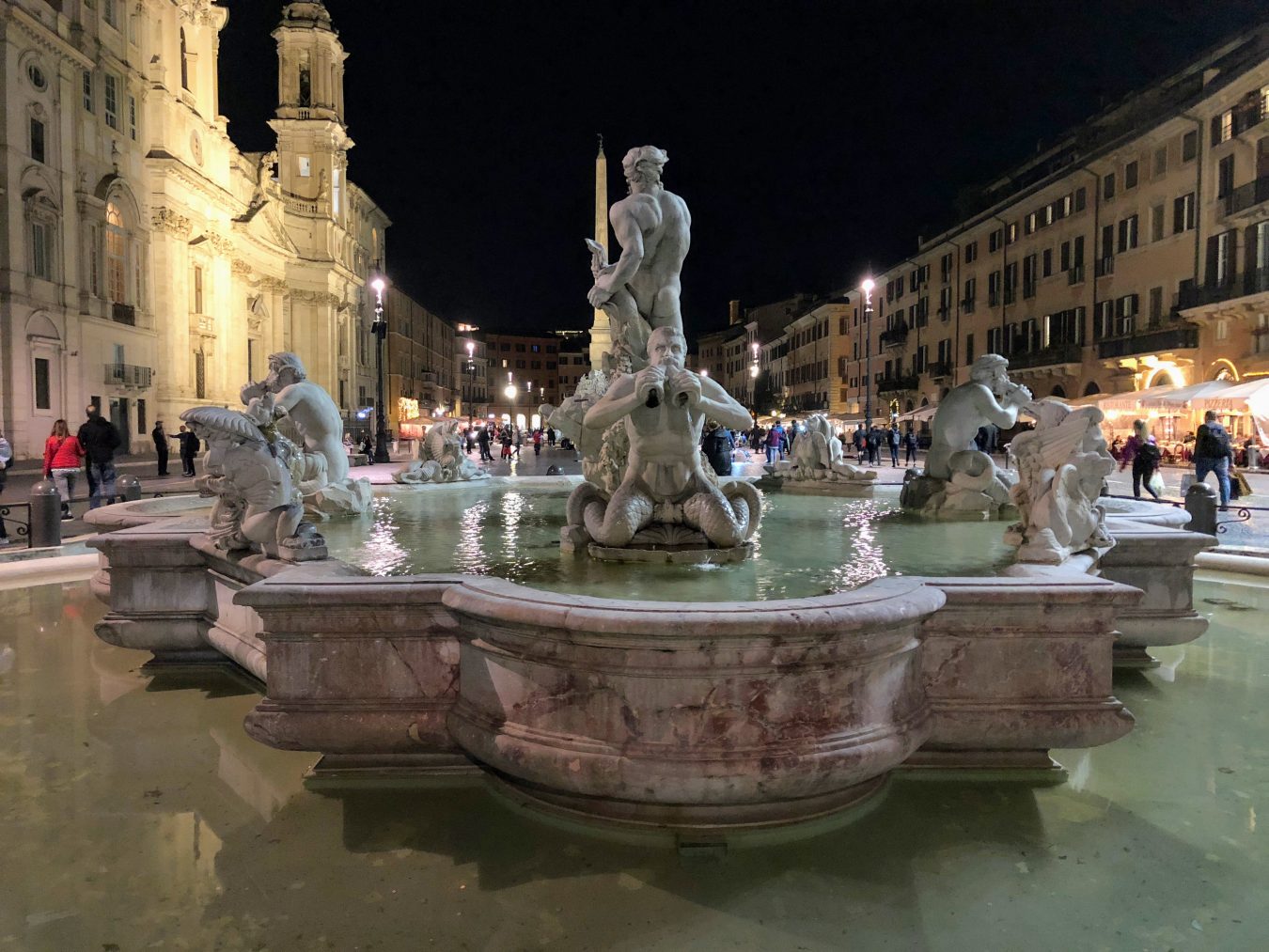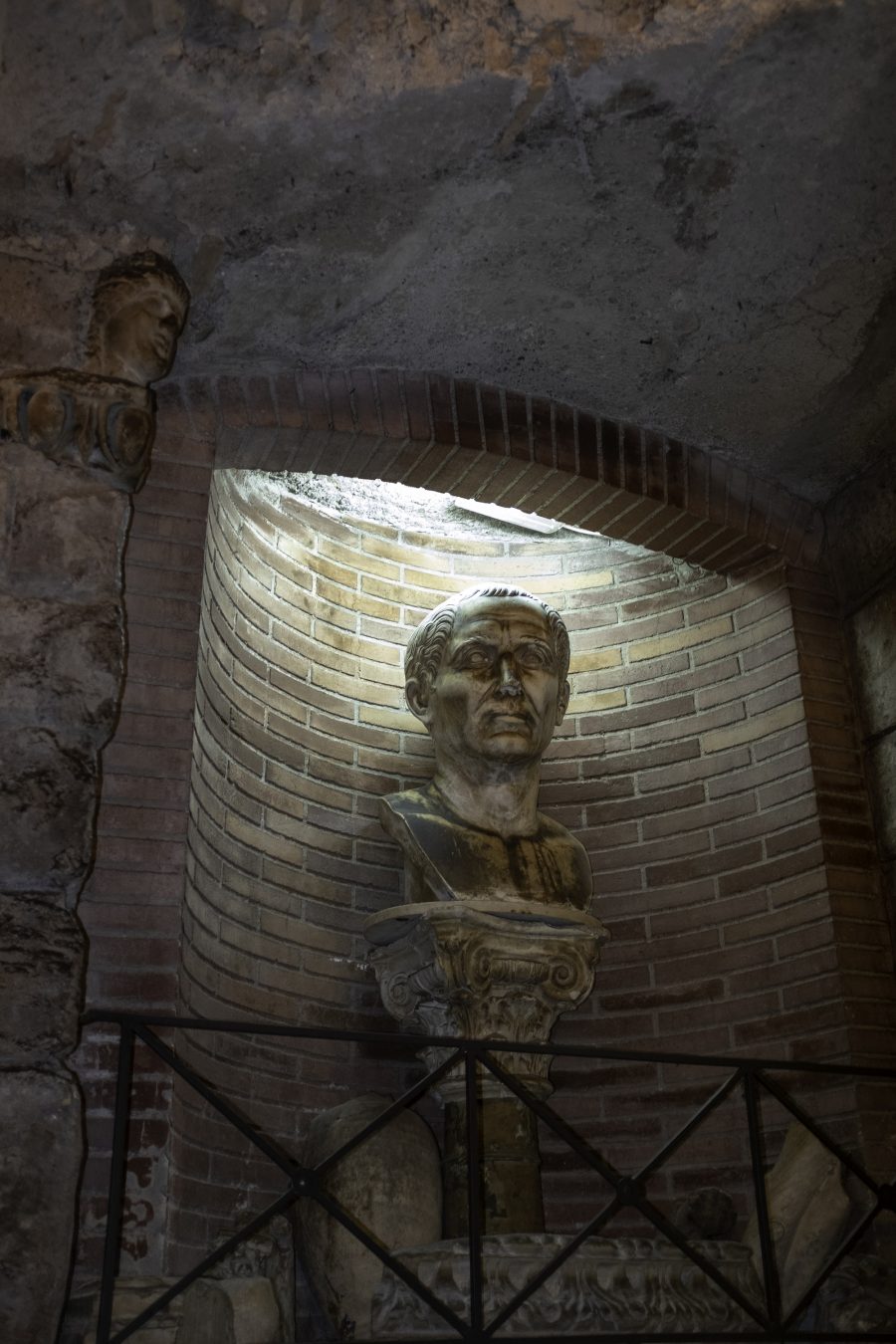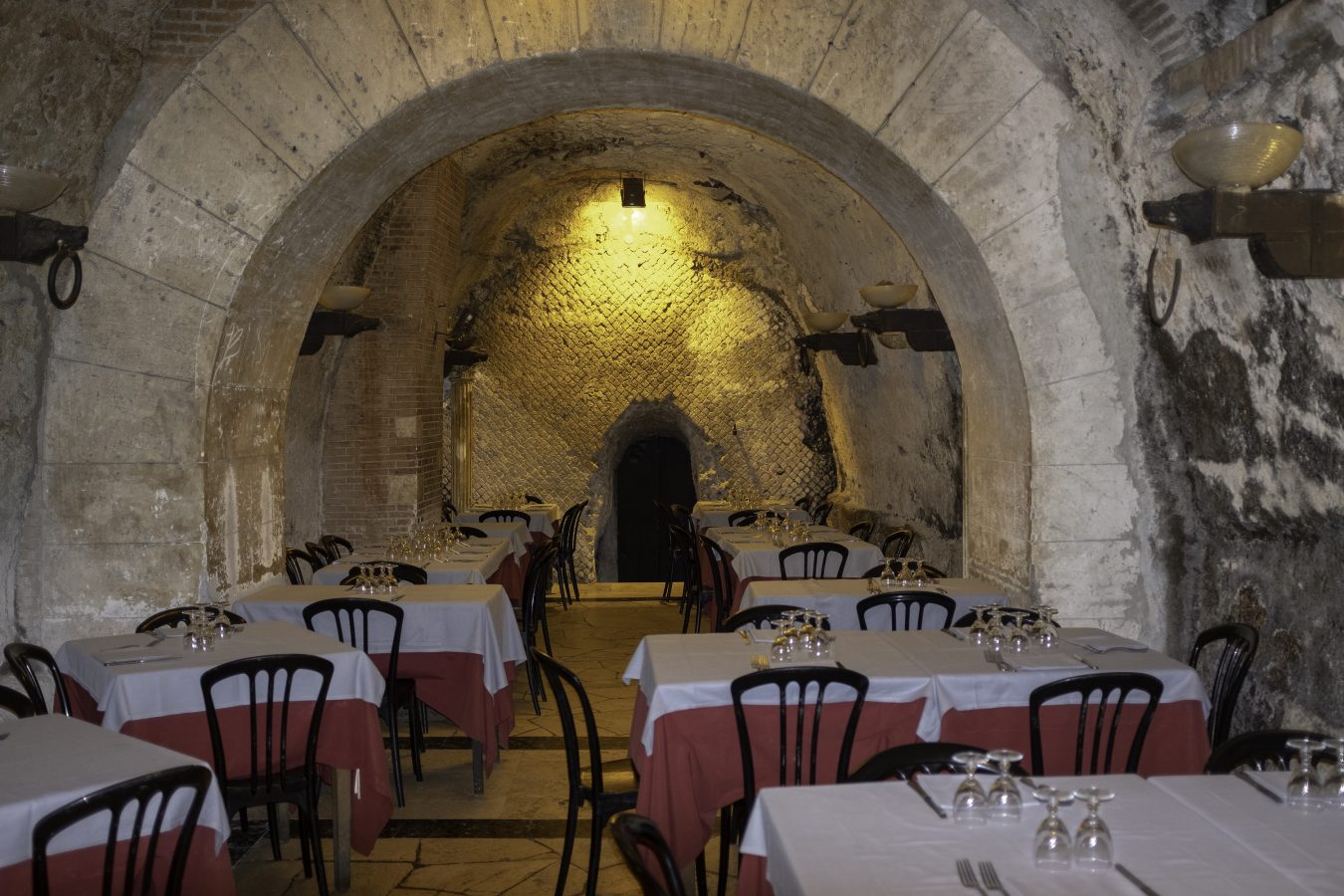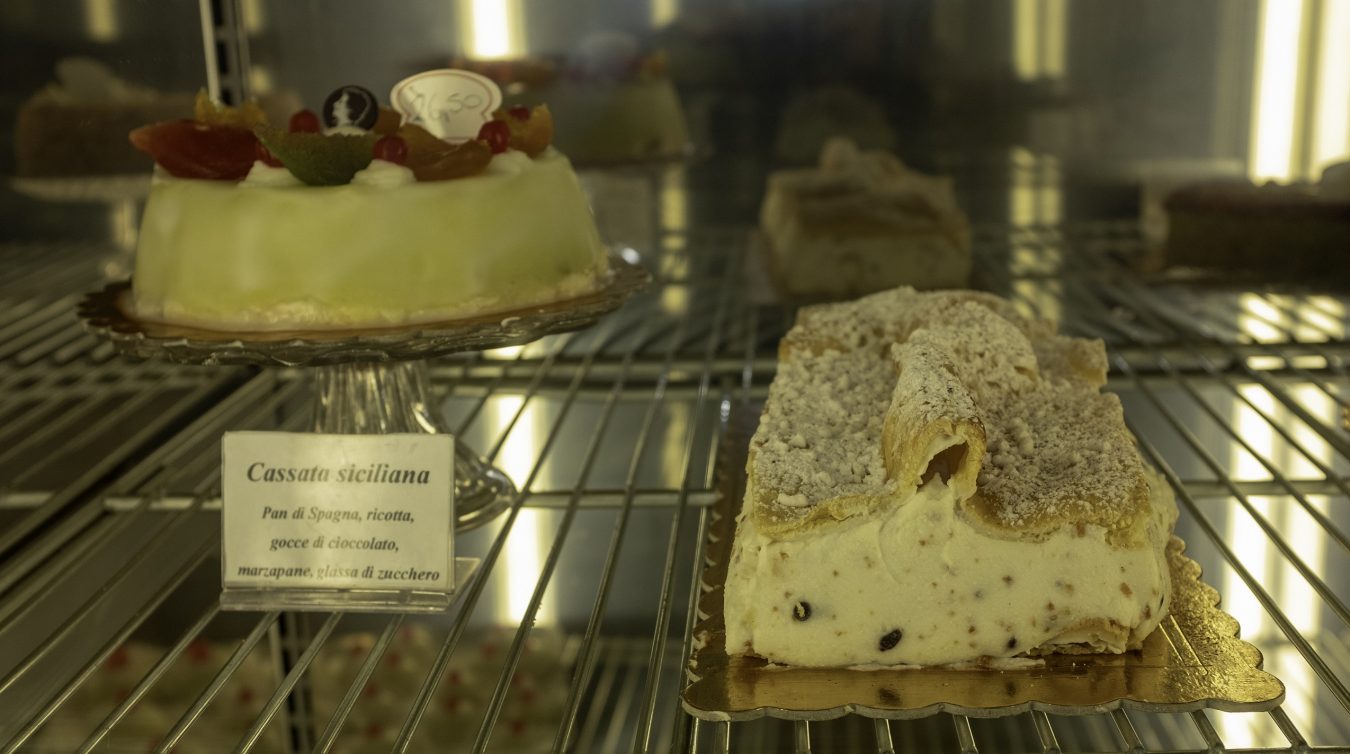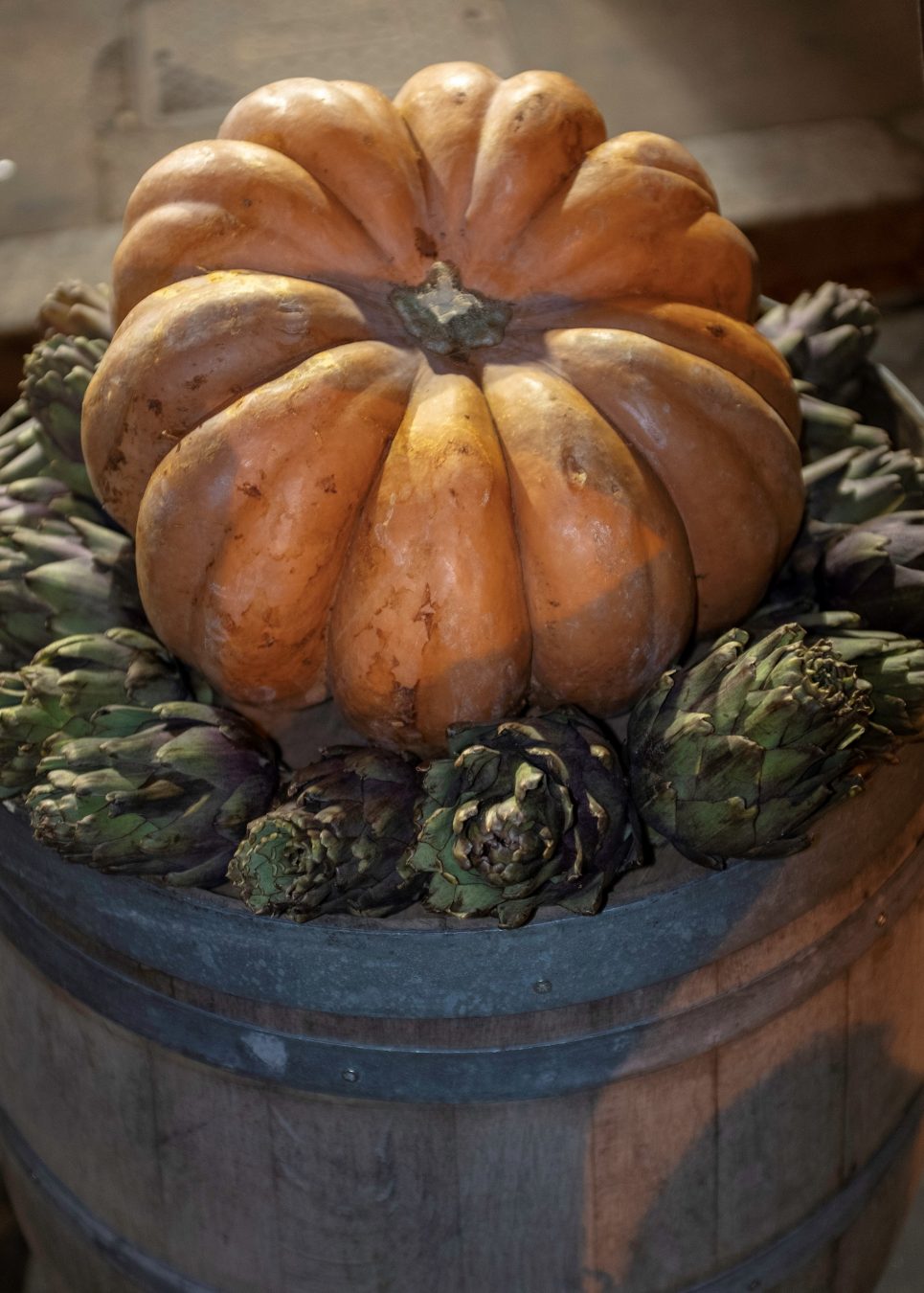For Cosimo Frascella, food is the way we talk to each other. In which case, we’re in for a fascinating conversation on his private walking culinary tour of Rome that he calls “the magic of Italian food in the magic of a Roman night.”
“There are so many osterias, trattorias, and gelaterias in Rome to choose from,” Frascella says at our first stop, an unpretentious local eatery off Piazza Mattei called Pane Vino e San Daniele. “It’s no coincidence that the best places in Rome are small, family-run businesses like this—because you always put more passion and love into something that you start with your family.”
I’m definitely feeling the gastronomic love as we tuck into an antipasto spread of prosciutto crudo San Daniele (named after the town that produces Italy’s finest ham), polenta with porcini mushrooms, and fontina and gorgonzola cheeses topped with radicchio and walnuts. This is the first of six stops we make at family-run establishments that Frascella has chosen for their authenticity, ambience, and historical significance. A native of Apulia (the stiletto heel of the Italian peninsula), he has been running foodie tours in Rome for nearly eight years. I found him through a Vancouver-based online tour booking platform called ToursByLocals that connects travellers with thousands of independent local guides in more than 150 countries. After all, as every savvy traveller will say, for the best culinary experiences you have to go where the locals do.
While in Rome, I stay at the Bettoja Hotel Mediterraneo; dating back to the 1930s, this recently renovated gem maintains its original Art Deco furnishings and is located on the highest of the city’s seven hills, the Esquilino, just 200 just metres from Termini Station. Cocktails are served in the flower-filled rooftop garden bar, with views of St Peter’s and the Coliseum.
But back to the task at hand: eating. At our next stop with Frascella, we munch on deep-fried carciofo alla giudia (Jewish-style artichokes) at La Taverna del Ghetto, a popular trattoria serving kosher cuisine in the heart of Rome’s Jewish Ghetto. One of the city’s most atmospheric neighbourhoods, the Ghetto dates back to the 2nd century BCE, making it possibly the oldest Jewish settlement in Europe.
Not nearly as old, but still notable for being in the same family for three generations, is a nearby bakery and pizzeria called Antico forno Roscioli specializing in Roman-style rectangular pinsa, or “shovel-shaped” pizza. As we sample slices of thin crust pinsa topped with anchovies, tomatoes, burra mozzarella, and Genovese pesto, Frascella explains that most Romans prefer pinsa over the round Neapolitan-style pizza most people associate with Italy.
Our next destination is one of Rome’s most fascinating trattorias. Ristorante Da Pancrazio, near Campo de Firori, contains a wine cellar that was once part of the ancient Teatro de Pompeo, said to be where Julius Caesar was murdered. The owner’s grandfather discovered the two-thousand-year-old ruin hidden beneath his restaurant in the 1940s. Today, guests can dine on signature dishes like elanzane alla parmigiana (eggplant parmesan), pasta paglia e fieno (hay and straw pasta), and vignarola (vegetable stew) in the very spot where Roman emperors once feasted and plotted.
And for a dose of la dolce vita, we visit a beloved pasticerra called I Dolci Nonna Vincenza, named after its 90-year-old founder and renowned for serving Rome’s best ricotta-stuffed Sicilian cannoli, cassatine, and granita. We end our tasting tour at a tiny storefront called Gelateria Artigianale Corona, where Giancarlo Corona and his children Viviana and Alessandro have been crafting homemade gelato since 1995. “To make real gelato you need to start with fresh milk and real fruit, then combine them with love,” Alessandro proudly explains as he offers me a scoop of Cioccolate Bianco. It’s a concept that tastes as good as it sounds.
There are more stories like this in Food and Drink.

